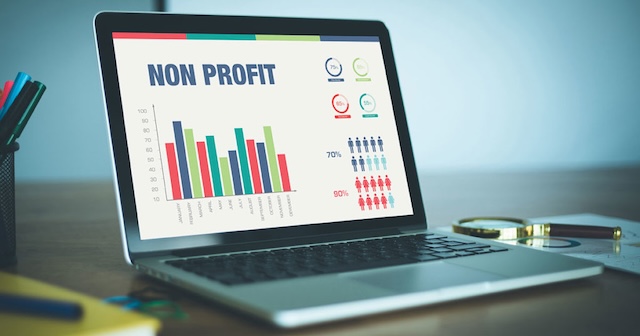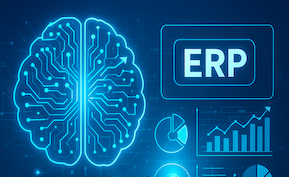Nonprofit Management
From Donor Lists to Donor Journeys: How Modern Nonprofit CRMs Redefine Fundraising

Introduction: Nonprofits have long relied on donor lists—basic databases of names, addresses, and contribution histories—to keep track of supporters. While these lists served their purpose in the past, today’s fundraising environment demands much more. Donors expect personalized engagement, transparency, and ongoing communication that reflects their interests and values. To meet these expectations, nonprofits are increasingly adopting Customer Relationship Management (CRM) systems built specifically for their sector. These platforms don’t just track donations; they enable nonprofits to build meaningful donor journeys, strengthen relationships, and ultimately raise more funds. This article explores how modern nonprofit CRMs redefine fundraising from static lists to dynamic, lifecycle-driven engagement.
The Limitations of Traditional Donor Lists
Donor lists—whether in spreadsheets, contact databases, or standalone donor management tools—were designed for record-keeping, not relationship-building. Their shortcomings include:
- Static Data: Lists capture one-dimensional details (name, gift amount, date) without context about the donor’s motivations or engagement preferences.
- Limited Segmentation: Nonprofits often struggle to filter lists effectively for targeted campaigns.
- Lack of Integration: Donor lists rarely connect to email platforms, social media tools, or accounting systems.
- Minimal Engagement Insights: They don’t track touchpoints such as event attendance, volunteer participation, or advocacy efforts.
As donor expectations evolve, these limitations hold nonprofits back from cultivating deeper, long-term relationships.
What Modern Nonprofit CRMs Offer
Modern nonprofit CRMs go far beyond storing donor contact information. They enable organizations to build personalized journeys and streamline fundraising operations through features like:
- 360-Degree Donor Profiles: A single record combines donation history, event participation, communication preferences, and volunteer activity.
- Segmentation and Targeting: CRMs allow nonprofits to group donors by giving history, interests, geography, or engagement style.
- Automated Campaigns: Tools trigger personalized emails, reminders, or thank-yous based on donor behavior.
- Engagement Tracking: Every touchpoint—from a social media click to a gala ticket purchase—feeds into the donor’s profile.
- Integration with Fundraising Tools: CRMs connect seamlessly with donation platforms, accounting software, and even grant management systems.
By centralizing data and automating engagement, nonprofit CRMs empower organizations to treat donors as partners in impact rather than one-time contributors.
From Transactions to Relationships
One of the biggest shifts brought about by nonprofit CRMs is the move from transactional giving to relationship-driven fundraising. Instead of focusing solely on the size or frequency of donations, CRMs encourage nonprofits to consider:
- Motivation: Why is the donor giving? Are they driven by personal experience, community ties, or issue advocacy?
- Engagement Path: Has the donor also volunteered, attended an event, or signed a petition?
- Communication Preferences: Does the donor prefer email updates, direct mail, or social media interactions?
- Loyalty Signals: Are they recurring donors, legacy givers, or occasional supporters who could be nurtured into regular contributors?
This relational approach builds loyalty and increases donor lifetime value while deepening the connection between mission and supporter.
Mapping the Donor Journey
A donor journey is the step-by-step process of engaging supporters, from their first contact to long-term stewardship. Modern CRMs make journey mapping possible by:
- Capturing First Touchpoints: Whether through a website visit, social media click, or event RSVP.
- Nurturing New Donors: Sending welcome emails, impact stories, and updates tailored to their interests.
- Encouraging Repeat Giving: Using reminders, recurring gift options, and tailored appeals.
- Deepening Engagement: Inviting donors to volunteer, advocate, or participate in programs.
- Recognizing Loyalty: Highlighting milestones, offering recognition, and sharing impact reports.
With automation and real-time data, CRMs ensure no donor gets lost in the shuffle and every supporter feels valued.
Benefits of Nonprofit CRMs in Fundraising
Shifting from donor lists to donor journeys brings measurable benefits:
- Increased Retention: Personalized engagement reduces donor churn.
- Higher Lifetime Value: Loyal donors give more over time, often across multiple channels.
- Improved Campaign ROI: Targeted messaging boosts conversion rates compared to generic appeals.
- Better Resource Allocation: Automation reduces administrative burdens, freeing staff to focus on mission-driven work.
- Enhanced Transparency: Donors receive clear updates on how their contributions make an impact, strengthening trust.
For nonprofits competing for limited donor dollars, these advantages are game-changing.
Case Study: Small Nonprofit, Big Impact
A community-based nonprofit specializing in youth mentorship transitioned from spreadsheets to a nonprofit CRM. Results within the first year included:
- 30% Increase in Donor Retention: Automated thank-you emails and impact updates improved loyalty.
- 40% Growth in Monthly Donors: The CRM made it easy to promote and manage recurring gifts.
- Streamlined Volunteer Tracking: Integration with volunteer management allowed for cross-engagement campaigns.
- Improved Grant Applications: Comprehensive donor and impact data strengthened grant proposals.
By moving from lists to journeys, the nonprofit not only raised more funds but also fostered stronger community ties.
Challenges and Considerations
Despite their potential, nonprofit CRMs also present challenges:
- Cost: Some platforms can be expensive, especially for small nonprofits.
- Complexity: Staff may need training to fully leverage CRM capabilities.
- Data Migration: Transitioning from spreadsheets or older systems can be time-consuming.
- Change Management: Teams may resist adopting new workflows or tools.
Nonprofits must weigh these factors carefully and choose CRMs tailored to their size, budget, and strategic goals.
Best Practices for Implementing a Nonprofit CRM
To maximize success, nonprofits should:
- Define Objectives: Clarify goals (e.g., retention, recurring gifts, volunteer integration) before selecting a platform.
- Prioritize Data Quality: Clean and standardize donor records before migration.
- Invest in Training: Provide staff with onboarding and ongoing education.
- Start Small: Implement CRM features gradually to avoid overwhelming staff.
- Measure Impact: Track key metrics such as donor retention, average gift size, and campaign ROI.
These practices ensure smoother adoption and greater return on investment.
The Future of Donor Journeys with CRM
Nonprofit CRMs will continue to evolve, incorporating cutting-edge technology to refine donor journeys further:
- AI-Driven Insights: Predictive analytics to identify potential major donors or at-risk supporters.
- Personalization at Scale: Automated campaigns tailored to individual donor behaviors and preferences.
- Mobile-First Engagement: Seamless donor experiences via apps, text-to-give, and mobile portals.
- Holistic Supporter Views: Integrating advocacy, volunteering, and donations into one lifecycle.
These innovations will ensure nonprofits stay relevant in an increasingly digital, donor-centric world.
Conclusion
The shift from donor lists to donor journeys represents a paradigm shift in nonprofit fundraising. Modern CRMs empower organizations to move beyond static records and toward dynamic, relationship-driven engagement. The result is stronger donor loyalty, greater fundraising success, and deeper mission impact. For nonprofits ready to evolve, adopting a CRM is no longer optional—it’s essential for building the future of fundraising.






